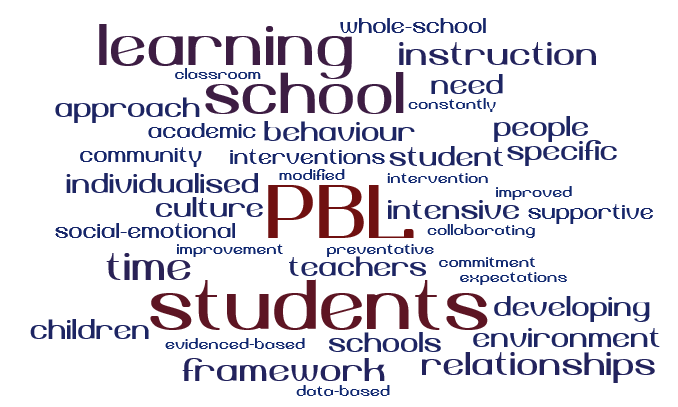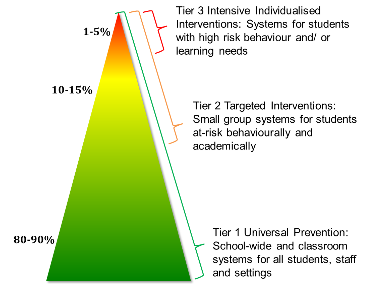PSPC is a PBL school
What is PBL?
Positive Behaviour for Learning is an educational framework that brings together the whole-school community to contribute to developing a positive, safe and supportive learning culture. PBL assists schools to improve social, emotional, behavioural and academic outcomes for children and young people.

PBL is a process, not a program.
When implemented well, teachers and students have more time to focus on relationships and classroom instruction.
Students and staff benefit from:
reduced problem behaviour
increased time focused on instruction
improved social-emotional wellbeing
positive and respectful relationships among students and staff
better support for teachers to teach, model and respond effectively to student needs
a predictable learning environment where staff and students know what is expected to deliver effective practices that can be sustained over time.
The PBL framework helps schools identify and successfully implement evidenced-based whole-school practices that enhance learning outcomes for children and young people.
It can be used to strengthen the existing systems, structures and processes within the school which underpin the school's ongoing improvement and effectiveness. For example, PBL uses school-wide data to identify patterns of problem behaviour, monitor student progress, reflect on teaching effectiveness and inform decisions that strengthen the learning environment.
Implementation PBL requires the commitment of the whole school community and the support of the principal and executive teachers to lead the process within the school. Specific attention to what needs to be done, how it is done and why it is being done across the school is critical to create a positive, safe and supportive learning environments.

The key implementation aspects include:
developing and using a common vision, language and experience to support PBL implementation
clear expectations of students and staff
collaborating with all staff to plan and implement PBL
having at least 80% of staff willing to support PBL
developing a team approach with regular meetings
creating, reviewing and revising a plan of action
collecting and using of data for decision-making
How long does it take to implement PBL?
PBL is a process, not a program. The length of time it takes to implement well varies by school. Schools typically take between 3 months to 2 years to fully implement the essential features of the whole school approach. The implementation process is ongoing and constantly modified to meet the changing needs of the school and to address current concerns.
There are three specific aspects to PBL:
universal focus – to create a preventative, positive learning environment for all students
targeted interventions – to improve social-emotional skills for students who need additional support
individualised intensive supports - for students who have experienced academic and behavioural difficulties over an extended period of time.

PBL uses a tiered intervention framework which uses varied levels of support for students based on their needs. The tiered approach addresses these needs through:
investing in prevention for all students
identifying and providing targeted supports for individual students who need more support
providing individualised and intensive interventions for students with significant support needs
Through this framework, student assessment and instruction are linked to inform data-based decision-making. All children and young people receive universal support and instruction. If students need more support, their instructional program becomes more intensive and individualised to target their specific learning needs.